The week at a glance
- Great Spotted Cuckoo in Cornwall
- Belated news of wintering White-throated Sparrow in Cheshire
- Two Zitting Cisticolas still on Guernsey
- Pallid Harrier reported in Shropshire
It was a mixed bag of sunshine and showers, with chilly winds and early-morning frosts bringing a slight halt to the springtime proceedings for much of this week. Conditions had a typically late-March feel to them, truth be told. However, as the review period concluded and April popped up, things were improving: a sizeable high pressure plonked itself across much of the country and warmer, more southerly sourced air hinted at a potential return to the excitement that the middle of March managed to provide.
Top billing, once again, goes to a Cornish Great Spotted Cuckoo found on April Fool's Day, at Bartinney Downs in the far west of the county. This site is just a couple of miles from Nanquidno valley where one of these super vagrants was seen on 23rd and it is perfectly feasible that the same bird is involved here. However, given the favourable weather and that we are talking about a Great Spotted Cuckoo (hardly the most unobtrusive of species), maybe it is the fourth of the spring. News emerged this week of a White-throated Sparrow that had spent much of December and the whole of January and February in a garden in Helsby near Runcorn (Cheshire), departing around 1st March. Despite the chitter-chatter, nothing sinister was involved: the bird had been seen by the householders and was even mentioned to a local birder within a few days of its appearance. The local birder, so the story goes, thought that, whatever the bird was, it would be an escape of some description and nothing more was heard until this week when a photograph emerged: sure enough, a lovely White-throated Sparrow! Assuming no sleight of hand (in a Steller's Eider style) was involved, this will be the second county record (following one on the Wirral in May 2003) and continues a long-established routine of occasional wintering records for American sparrows and their allies. Over on Guernsey, the two Zitting Cisticolas remained at Port Soif until at least 30th, while in Shropshire an adult male Pallid Harrier was reported hunting over fields near Hanwood on 26th. There is a March arrival already on the books, the stunning male seen in Cornwall, at Sennen, at the end of the month in 2003.
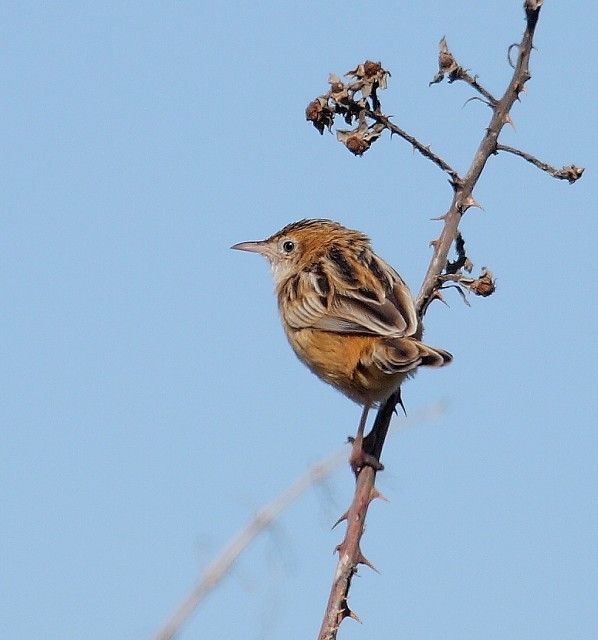
Zitting Cisticola, Port Soif, Guernsey (Photo: Chris Bale)
There was very little to tickle the fancy of those of seawatching persuasion this week, the only record of note being a Grey Phalarope seen from the Stranraer to Belfast ferry on 27th.
The Scilly Cattle Egret continued a lonely vigil among the new-growing crops on the allotment on St. Mary's this week, still making use of the occasional greenhouse for a tasty morsel from time to time. Nine Cattle Egrets remained around the Hayle Estuary (Cornwall) to 1st and six were at Brew Pool near Sennen to the same date. Single birds remained at Powderham (Devon), Swineham GPs (Dorset), around Frampton and Slimbridge (Gloucestershire), Bradley (Cheshire), Bures (Suffolk), on the Nevern Estuary (Pembrokeshire) and at Port St. Mary on the Isle of Man. A new bird was found at Fisher's Mill (Warwickshire) on 31st, remaining to 1st. In County Cork, nine birds were seen at Timoleague on 28th (with eight still there on 31st) while six were at Rossleague the following day. Five birds roosted at the Beamish Pool on 30th. In County Waterford, four birds were still at Ballycrompane on 28th, with the same date seeing two birds apiece for Ballyduff and Blackwater Callows.

Cattle Egret, Newport, Pembrokeshire (Photo: Paul Mahiques)
Five Great White Egrets were seen this week. One remained at Shapwick Heath out on the Somerset Levels to 27th, while in Scotland one was at Gilmourton (Clyde) to 1st. New singles were at Belvide Reservoir (Staffordshire) and Leighton Moss (Lancashire) on 31st and at Skibbereen (Co. Cork) on 1st. Seven Spoonbills were at Arne (Dorset) on 29th, with another still at Lodmoor to 26th. Elsewhere, singles were seen at Farlington Marshes (Hampshire), Cuckmere Haven (East Sussex), Old Hall Marshes and Abberton Reservoir (Essex), and Minsmere (Suffolk). Three Spoonbills were at Penhill Marsh (Devon) on 31st. Common Cranes remained around the Norfolk Broads throughout the week (including five over the dunes at Winterton on 30th and six at the Horsey roost on 1st) and three were at Lakenheath (Suffolk) over the weekend. A couple of ringed (presumed escaped) White Storks were roaming West Yorkshire and Northumberland during the week, including two birds circling over Huddersfield on 1st. The provenance of single birds at Lackford Lakes and Stoke-by-Nayland (Suffolk) and at Chatteris (Cambridgeshire) on 27th is rather harder to prove either way. The same goes for the birds reported at Great Chesterford (Essex) on 28th and Frodsham (Cheshire) on 1st. There is less doubt over the first Purple Heron of 2009: the bird at St. John's Lake (Cornwall) on 29th would doubtless have been somewhere rather warmer as the week began. Two days later the second of the year appeared in Suffolk, flying over Ipswich.

Spoonbill, Farlington Marshes HWT, Hampshire (Photo: Doug Kelson)
The adult Snow Goose was still at Craobh Haven (Argyll) to 28th and another was on the South Slob (Co. Wexford on 31st. Next door on the North Slob, a Black Brant was seen on 28th–29th and one remained at Titchwell (Norfolk) to 30th.
The two usual Lesser Scaup suspects lingered at Holme Pierrepont (Nottinghamshire) and Cardiff Bay (Glamorgan) this week, with the former bird making it into April. Drake Ring-necked Ducks this week were noted at Frithend Sand Pits (Hampshire) and Loch an Eilein, Tiree (Argyll) on 27th (with it or another at Loch Bhasapol the following day), Foxcote Reservoir (Buckinghamshire) on 28th, Frensham Great Pond (Surrey), Cornabrass Lough and Upper Lough Erne (Co. Fermanagh), all on 29th, and Oxford Island (Co. Armagh) on 31st. The female was still at Swineham GPs (Dorset) to 29th, while other longer-staying "sisters" were at Martnaham Loch (Ayrshire) and North Ronaldsay (Orkney), and two were still on Vartry Reservoirs (Co. Wicklow).

Lesser Scaup, Holme Pierrepont, Nottinghamshire (Photo: Josh Jones)

Ring-necked Duck, Frensham Great Pond, Surrey (Photo: Ian Morrissey)
The drake Ferruginous Duck remained at Chew Valley Lake (Somerset) on 28th–1st, while in Suffolk another drake was noted back at Trimley Marshes on 28th and nearby Loompit Lake on 29th. A third drake at Strumpshaw Fen (Norfolk) on 28th relocated to nearby Cantley Beet Factory the following day where, unfortunately, his colour ring was all too plain to see. The presumed hybrid drake Canvasback × Pochard was at Livermere Lake (Suffolk) on 26th, moving back to Lackford Lakes on 27th (although some observers have wondered whether the bird is actually a full-on Canvasback).
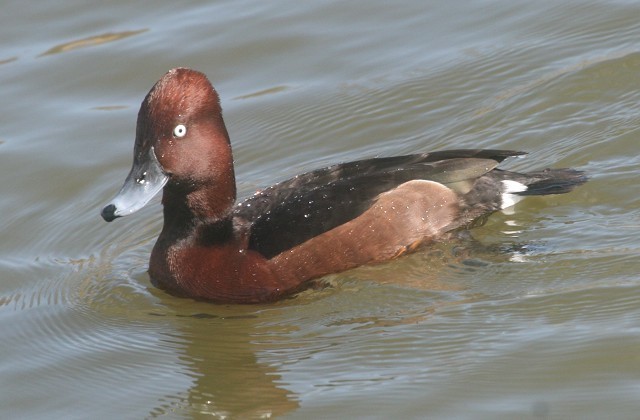
Ferruginous Duck, Chew Valley Lake, Somerset & Bristol (Photo: Bill Dixon)
A drake Blue-winged Teal was a neat find on Lough Atedaun (Co. Clare) on 29th; the record books show that one was shot near Shannon Airport in September 1969, but the local Clare website quotes this bird as a "first county record and long overdue". The bird was still present to 31st, when a Green-winged Teal was found for good measure. How many times has that happened — both the rare teals in one place? Other Green-winged Teal this week remained at Frampton-on-Severn (Gloucestershire), Eyebrook Reservoir (Leicestershire), Greenabella Marsh (Cleveland), Campfield Marsh (Cumbria) and Letham Pools (Fife). On Orkney, one was again noted at Loch of Tankerness, and back in Ireland another was still at Tacumshin this week. The final new birds of the week were found at Draycote Water (Warwickshire) on 30th and Loch Gruinart (Islay) on 31st. The first-winter drake American Wigeon was still at Slimbridge from 26th–31st and new birds found on 1st were at Manby (Lincolnshire) and on the Ythan Estuary (Aberdeenshire). Both were drakes and the bird in Scotland may have had a female for company too.

Green-winged Teal, Draycote Water, Warwickshire (Photo: Dave Hutton)
The drake Surf Scoter remained off Ruddon's Point (Fife) this week, while single females lingered off Dawlish Warren (Devon) and Hough Bay (Tiree). The pair of King Eiders were in Drumcliffe Bay, Lissadell (Co. Sligo) to 1st and the drake at Kincraig Point (Fife) was present to 28th at least. The big question of the week: have people finally given up on the Dorset Hooded Merganser? There were no reports at all — surely he hasn't finally gone? If so, his vagrant status may soar once more!
Out on Tiree, a first-winter Gyrfalcon was still around Kilmoluaig from 26th–28th. This was actually the second bird seen on Tiree this month, following on from the photographed adult at Loch Gorm and Loch Gruinart on 21st. In Ireland, a young Gyr was seen again at Annagh Head (Co. Mayo) — almost two weeks after the last sighting. In Cornwall, there were three reports of Gyrfalcons: at Trevose Head on 27th, at Crackington Haven on 28th and at Newquay on 1st. Only one Rough-legged Buzzard was reported this week, seen flying west over Hoveton Hall (Norfolk) on 27th.
It was another very quiet week in terms of shorebirds, the sole highlight being the first-summer Black-winged Stilt on Cape Clear Island (Co. Cork) to 31st at least.
On 30th, a Bonaparte's Gull was seen on South Uist (Outer Hebrides) for the third year in a row (and the fourth year in the past five). Last year, an adult was noted from 4th April onwards and it seems highly likely that it is the same bird returning. In Glamorgan, the adult Bonaparte's Gull was still around the Taff Estuary and Cardiff Bay to 30th. The only Caspian Gulls this week were two birds (both first-winters) at Southwold (Suffolk) on 28th, two more (a first-winter and third-winter) at Swillington Ings (West Yorkshire) on 31st and a single bird at Ditchford GPs (Northamptonshire) on 29th.
A dozen Iceland Gulls were still at the Shetland Catch factory near Lerwick on 28th and they were among some 55 birds seen in Britain this week. Ireland almost matched the British tally, with at least 47 birds noted. Rossaveal in County Galway led the way again with 11 birds on 28th. Up in Donegal, Killybegs scored nine on 29th, while at Nimmo's Pier (Galway) eight birds were present on 28th. Five young birds were at Baltimore (Co. Cork) on 27th.
Four Kumlien's Gulls were reported this week. A second-winter was at Blackborough End (Norfolk) on 28th (the same bird as last week, but it was noted as a third-winter then). Also on 28th, single second-winter and third-winter birds were at Nimmo's Pier and a third-winter was again at Newtownards (Co. Down) on 29th. On 31st a second-winter Kumlien's Gull was seen in the roost at Stewartby Lake (Bedfordshire), reappearing the following evening.
Numbers of Glaucous Gulls fell again this week, with only around 35 reported. Three were seen on North Ronaldsay (Orkney) on 27th and two juveniles were together in the harbour at Southwold (Suffolk) on 28th. On South Uist, six birds were seen on 1st.

Glaucous Gull, Walberswick, Suffolk (Photo: Mike Parker)
An adult Ring-billed Gull was reported belatedly from Newnham (Gloucestershire) on 25th. This week saw the first-winter remain at Helston (Cornwall), the second-winter again at Ferryside (Carmarthenshire) on 31st and regular adults still at Westcliff-on-Sea (Essex), Oban (Argyll) and Dingwall (Highland). In Lancashire, a first-winter Ring-billed Gull was at Stocks Reservoir on 28th and an adult was at Seaforth on 29th and 31st–1st. In Ireland, two adults were seen throughout the week at Nimmo's Pier with two more at Cuskinny Marsh (Co. Cork) on 29th. In Cork City, a first-winter was seen on 27th and another first-winter lingered in County Antrim to 30th. Single adults were also noted in Timoleague in Cork, as well as in Wicklow and Limerick but it was, once again, Sandymount in County Dublin that fared best with six birds (five adults and one second-winter) present on 30th.
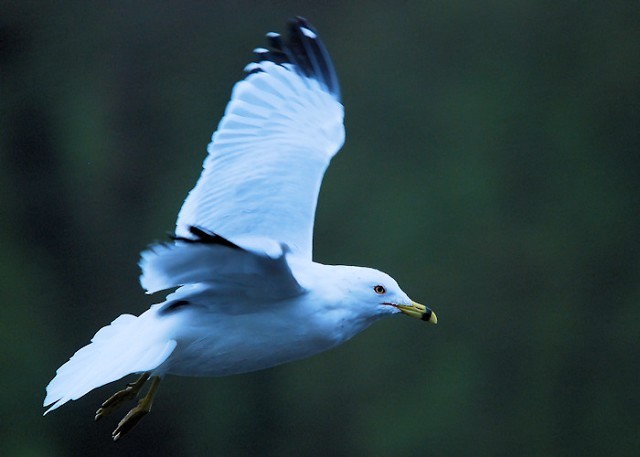
Ring-billed Gull, Cuskinny Marsh, Cork (Photo: Ronan mclaughlin)
The first-winter Snowy Owl was still being seen around Sperris Quoit and Amalveor Downs (Cornwall) on 28th–29th before appearing near Sennen Cove on 1st (having been seen at Sperris Quoit earlier in the day). In Norfolk, the Dark-breasted Barn Owl was again at Welney on 27th.
After last week's haul of at least 11 Hoopoes, just four were seen this week and one of those was a leftover — one still on Sherkin Island (Co. Cork) to 26th. Another was reported at Wem (Shropshire) on 31st, and confirmed birds were seen at Corton (Suffolk) and at the Newport Wetlands (Gwent) the same day. The second Alpine Swift of March was seen over St. Just (Cornwall) on 31st.

Hoopoe, Corton, Suffolk (Photo: Jon Evans)
Great Grey Shrike numbers fell to around 15 in twelve counties this week. Most were long-staying wintering birds, but single birds on 29th at Cutthroat Bridge near Ladybower Reservoir (Derbyshire) and Abbeystead (Lancashire) were of note, as were the two birds at Whixall Moss (Shropshire) on the same date. As expected, Waxwings were noted in ever-decreasing numbers this week, although around 100 birds were seen at Bilborough (Nottinghamshire) on 26th and almost 200 were noted in and around Glasgow (Clyde) on 30th.
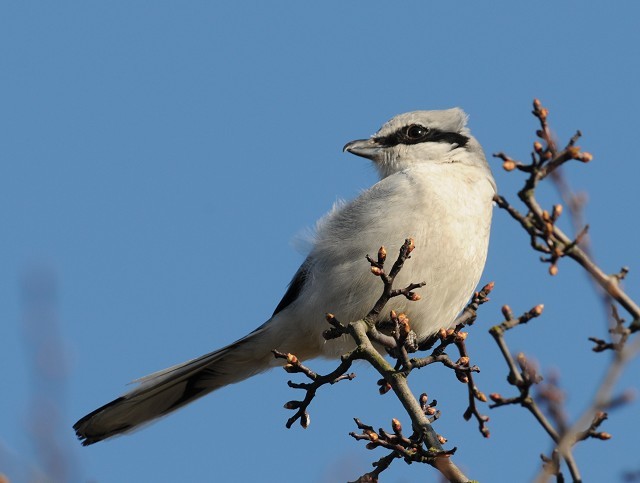
Great Grey Shrike, Cutthroat Bridge, Derbyshire (Photo: Sean johnston)
Singing male Siberian Chiffchaffs this week included the long-staying bird at Endon (Staffordshire) to 1st with another in the county, at Westport Lake, from 30th. Two males were still at Sandown (Isle of Wight) and one was singing at South Milton Ley (Devon) on 29th–30th. April 1st saw the final bird of the week noted at Portland (Dorset).
The Penduline Tit was still in Paignton (Devon) to 1st — where he decided to burst into song from time to time — and two birds were again at Rainham Marshes (London) on 29th. In Suffolk, the three male Penduline Tits were again at Dingle Marshes on 30th.
Photo of the Week

Red-necked Grebe, Foremark Reservoir, Derbyshire (Photo:
Robert Askew)
Robert Askew's bird photos have gone from strength to strength, and have become a regular feature in our weekly review of notable images. This week, Robert has uploaded a series of images of the gorgeous, summer-plumaged Red-necked Grebe at Foremark Reservoir in Derbyshire. Best among these is a stunning close-up captured in great light. This image is a good example of the benefits of making a follow-up trip to a long-staying bird if you're not satisfied with the photos you captured the first time around.

Jay, undisclosed site, Cheshire (Photo:
Richard Steel)
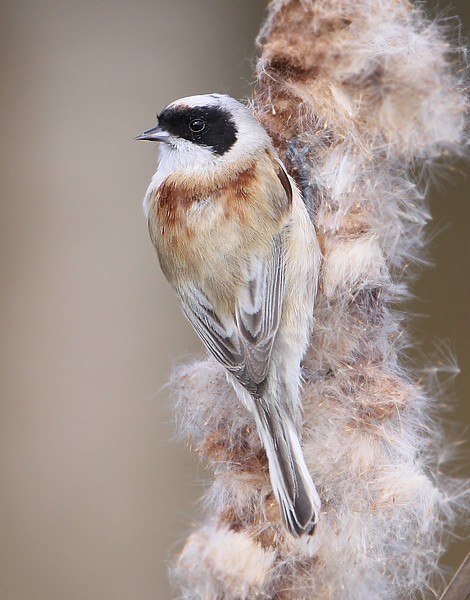
Penduline Tit, Clennon Valley Lakes, Devon (Photo:
Gary Thoburn)

Barn Owl, West Acre, Norfolk (Photo:
Stephen Durrant)

Squacco Heron, Spain (Photo:
Steve Fletcher)
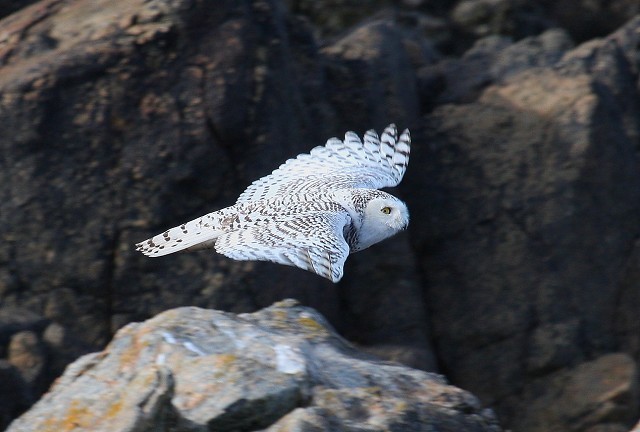
Snowy Owl, Lihou, Guernsey (Photo:
Chris Bale)

Nuthatch, Rozelle, Ayrshire (Photo:
Mark Hope)

Great Crested Grebe, Foremark Reservoir, Derbyshire (Photo:
Robert Askew)

Gannet, Bempton Cliffs RSPB, East Yorkshire (Photo:
Marcus Conway)

Marsh Harrier, Cley Marshes NWT, Norfolk (Photo:
Nigel Pye)

Red Grouse, undisclosed site, Borders (Photo:
Peter Macdonald)
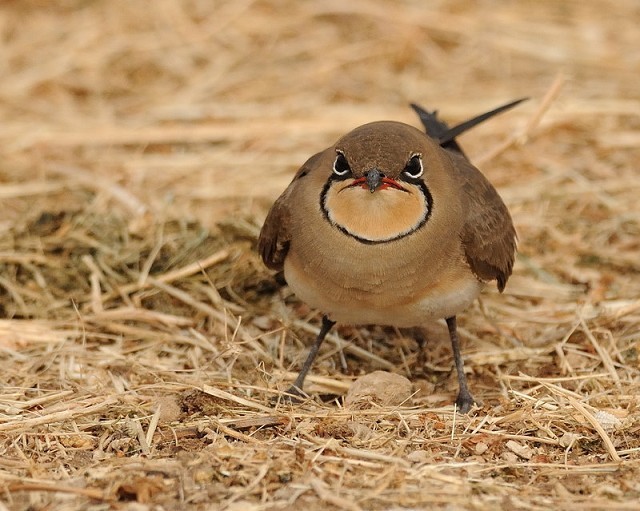
Collared Pratincole, Bahrain (Photo:
Adrian Drummond-Hill)

Common Crossbill, Cannock Chase, Staffordshire (Photo:
Kev Joynes)

Northern Wheatear, Swinton, Greater Manchester (Photo:
A.Dancy)

Avocet, Marshside RSPB, Lancashire (Photo: anon)

